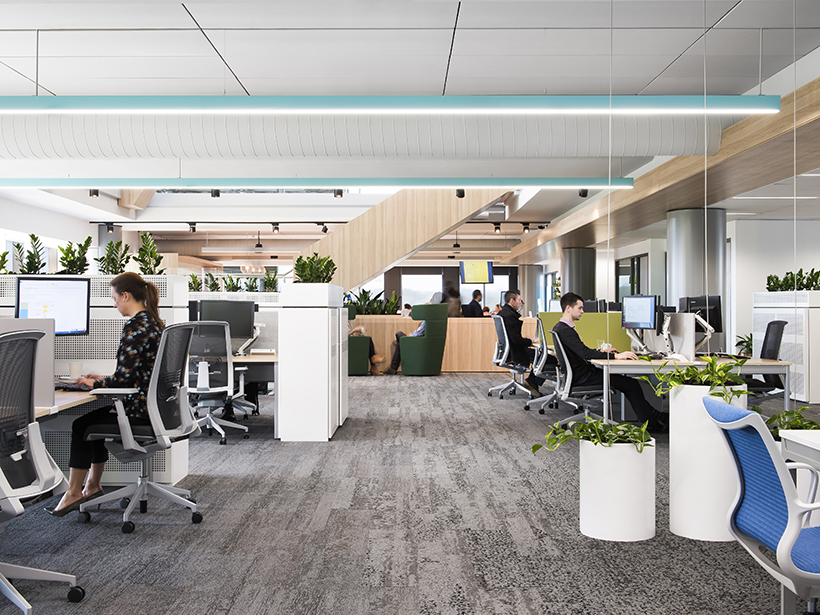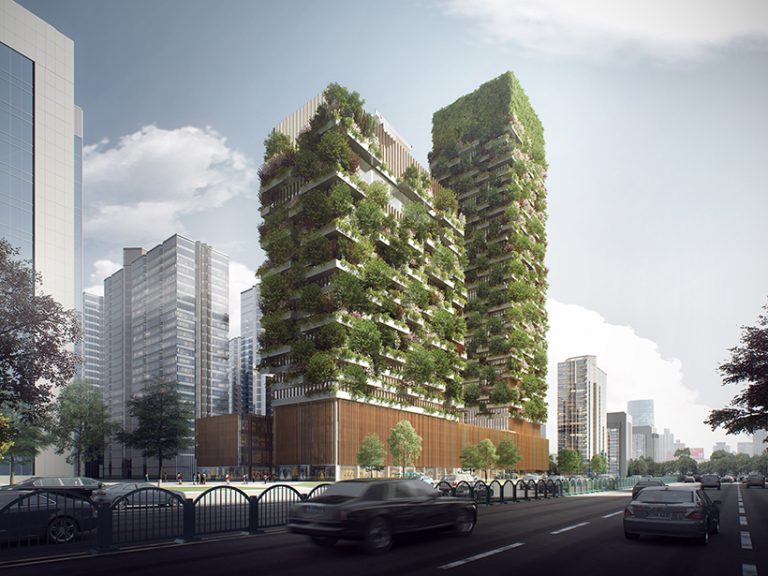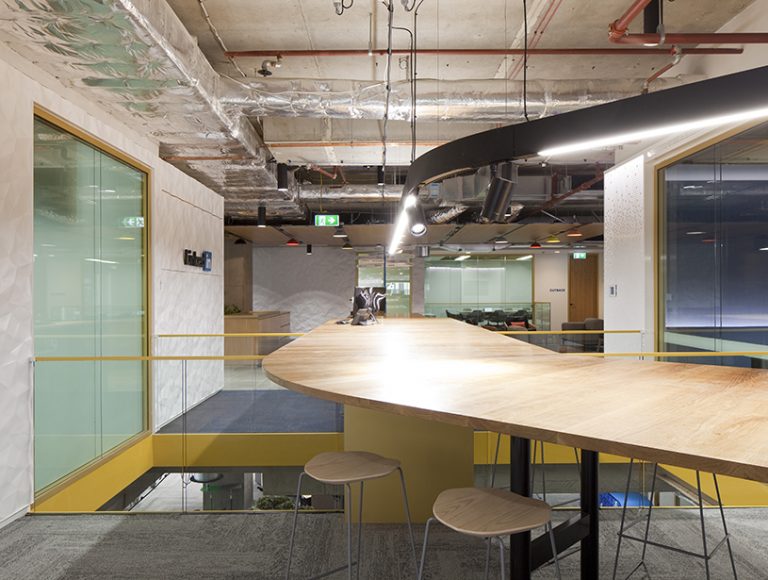When your office is in the ‘zones’

Offices used to be such simple places: some desks and chairs, a couple of partitions, a kitchenette and a couple of bathrooms and you were good to go.
Not anymore.
One of the latest trends in office design is the concept of ‘zones’ within a workplace, giving employees options on where they would prefer to work at any particular moment.
Biopharmaceutical company AstraZeneca Australia is one company to have adopted the approach at its new office at Sydney’s Macquarie Park, designed by Futurespace.
Commercial Insights: Subscribe to receive the latest news and updates
The 3000sqm office area has been split into four zones, giving each of the company’s 200 Australian employees the choice to work in a different area, based on their style of working and the level of collaboration required.

The office features more informal spaces in its “Base Zone”. Picture: Nicole England.
Venture into the “Unplugged Zone” and you’ll most likely be engaging in very interactive management-type activities.
Move to the “Connected Zone” and you’ll be engaging with colleagues and visitors, as well as using formal meeting spaces, conference rooms and video conferencing systems.
The “Base Zone” is the office’s main component and represents more your standard workspace, with open plan desk areas, private spaces and informal meeting spots.

Are ‘zones’ the future of office space design? Picture: Nicole England
There is also a ‘Virtual Zone”, which isn’t actually a physical space, but refers to the office’s integrated technology, which includes Wi-Fi everywhere in the building, as well as technology to locate anyone in the office at any time (given the lack of assigned seating).
Futurespace managing director Angela Ferguson says the ‘zone’ concept is intended to create a more “agile” working environment.
“Each zone was designed to facilitate different styles of working, whether it’s informal chats over coffee, structured team meetings or focused individual work,” Ferguson says.
“Sitting at the same desk all day does not promote productivity, health and wellbeing, or collaboration. However, it is just as troublesome to have employees work wherever they want without having the correct design infrastructure in place. That is why the ‘zones’ are effective.”







